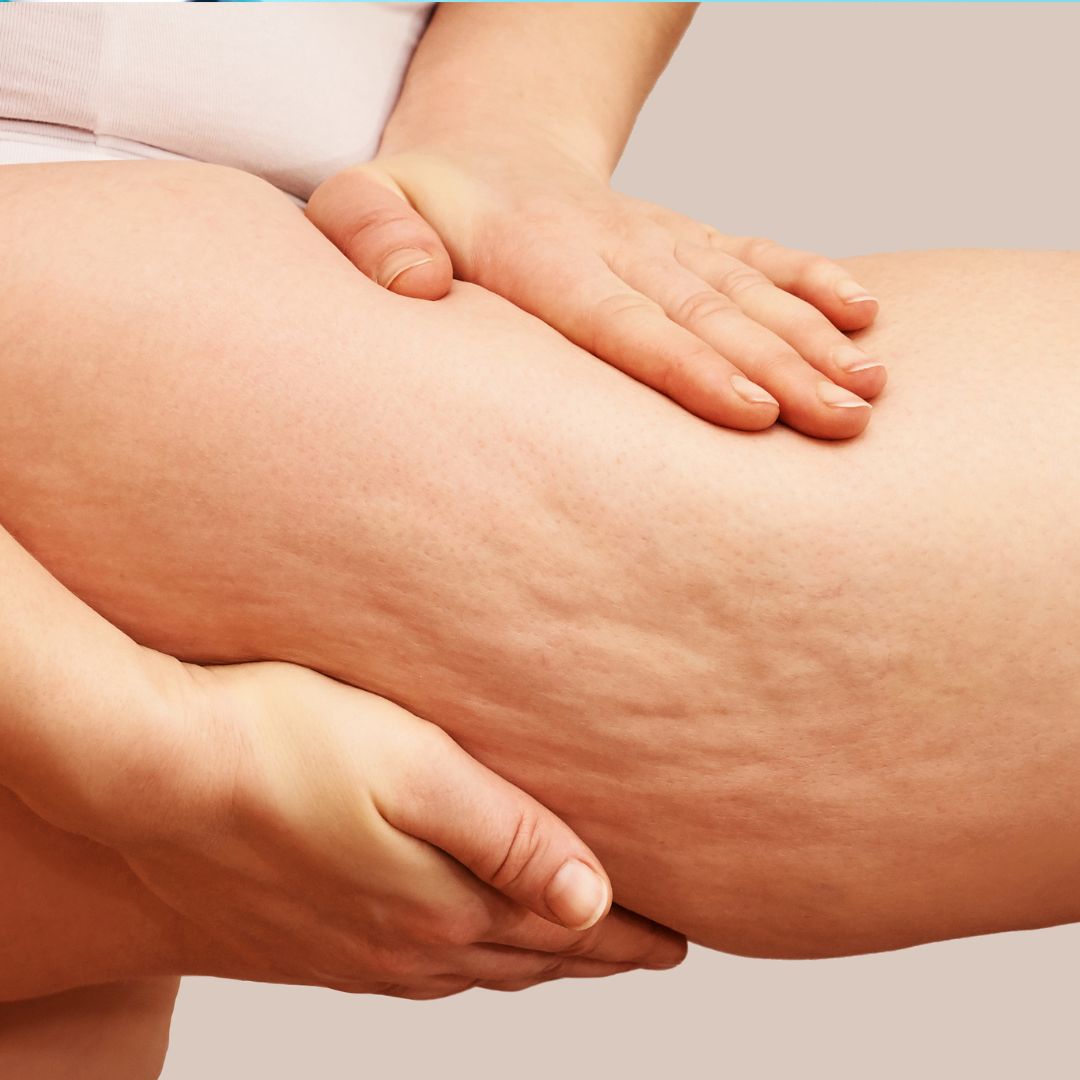Understanding Cellulite
Cellulite, the dimpled and uneven skin texture that typically appears on different parts of the body, is a common aesthetic concern that many individuals find troubling, particularly women.

Defining Cellulite
Cellulite refers to the alteration of the skin's appearance, resulting in a dimpled or lumpy texture, often compared to the appearance of an orange peel or cottage cheese. It is typically found on the thighs, buttocks, hips, and abdomen. Despite its prevalence, cellulite remains a subject of curiosity and concern for many individuals seeking to understand its underlying causes.
Etymology of Cellulite
The term "cellulite" was first introduced in French literature in the late 19th century. It was derived from the French word "cellule," meaning a small cell, combined with the suffix "-ite," indicating inflammation or disease. However, it is important to note that cellulite is not an inflammatory condition but rather a structural change in the skin's connective tissue.
Scientific Research and Cellulite
According to a study published in the Journal of the European Academy of Dermatology and Venereology, cellulite affects approximately 85-98% of post-pubertal females worldwide.
To comprehend the intricacies of cellulite, researchers have conducted numerous studies to unravel its causes, contributing factors, and potential treatment options. By analyzing these scientific findings, we gain a deeper understanding of cellulite and its impact on the body.
Connective Tissue Architecture
One key aspect that plays a big role in the development of cellulite is the structure of the connective tissue beneath the skin. Research suggests that alterations in the connective tissue, primarily composed of collagen fibres, can lead to the characteristic dimpling seen in cellulite. Factors like hormonal changes, genetics, and lifestyle choices can affect the structure and function of this tissue.
Fat Distribution and Cellulite
While cellulite is not solely related to excess body weight, it is often more noticeable in individuals with higher body fat percentages. Subcutaneous fat, the fat stored beneath the skin, can contribute to the appearance of cellulite. Research indicates that the distribution and behaviour of fat cells and their interaction with the connective tissue may play a role in the development of cellulite.
Blood Circulation and Lymphatic Drainage
Proper blood circulation and lymphatic drainage are crucial for maintaining healthy skin. Studies suggest that compromised blood flow and impaired lymphatic drainage can contribute to the accumulation of fluids, toxins, and waste products, exacerbating the appearance of cellulite. Promoting healthy circulation through exercise, massage, and other techniques may help reduce the visibility of cellulite.
Treatment Options and Lifestyle Changes
While complete eradication of cellulite may not be possible, various treatment options and lifestyle changes can help minimize its appearance. These options may include the following:
Nonsurgical cellulite treatments: Treatments based on therapeutic energies, such as radiofrequency, have been medicall proven to minimize the appearance of cellulite. One of the most effective treatments for cellulite that we have found is Venus Freeze.
Massage techniques: Techniques such as dry brushing, foam rolling, or lymphatic drainage massage may help stimulate blood flow and improve the overall texture of the skin.
Healthy lifestyle choices: Regular exercise, a balanced diet, hydration, and maintaining a healthy body weight can contribute to the overall health of your skin. These can potentially reduce the appearance of cellulite.
Cellulite remains a topic of interest for many individuals, and scientific research continues to shed light on its causes and potential treatment options. Understanding the definition, etymology, and scientific findings surrounding cellulite allows us to approach this cosmetic concern with informed knowledge and explore ways to improve the skin's overall texture. Remember, embracing self-acceptance and focusing on overall wellness are essential in embracing our bodies, regardless of the presence of cellulite.
